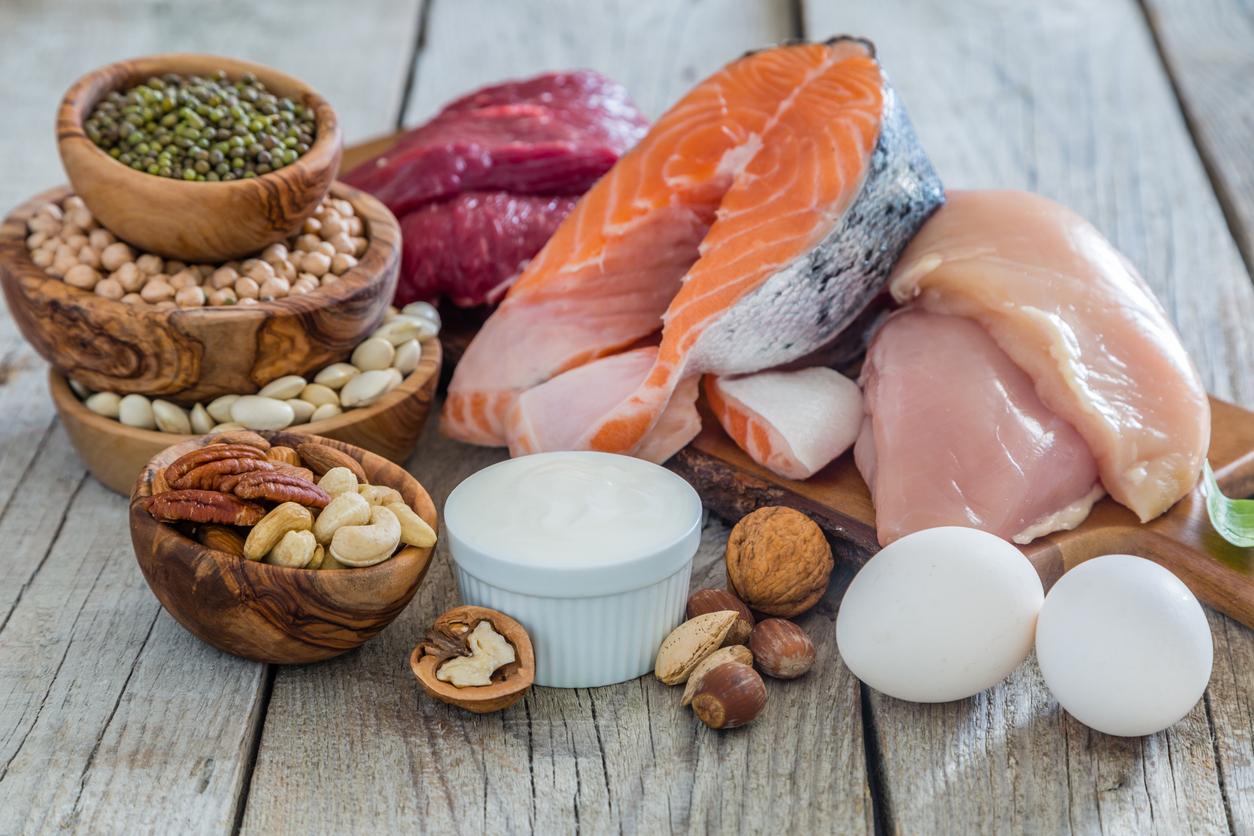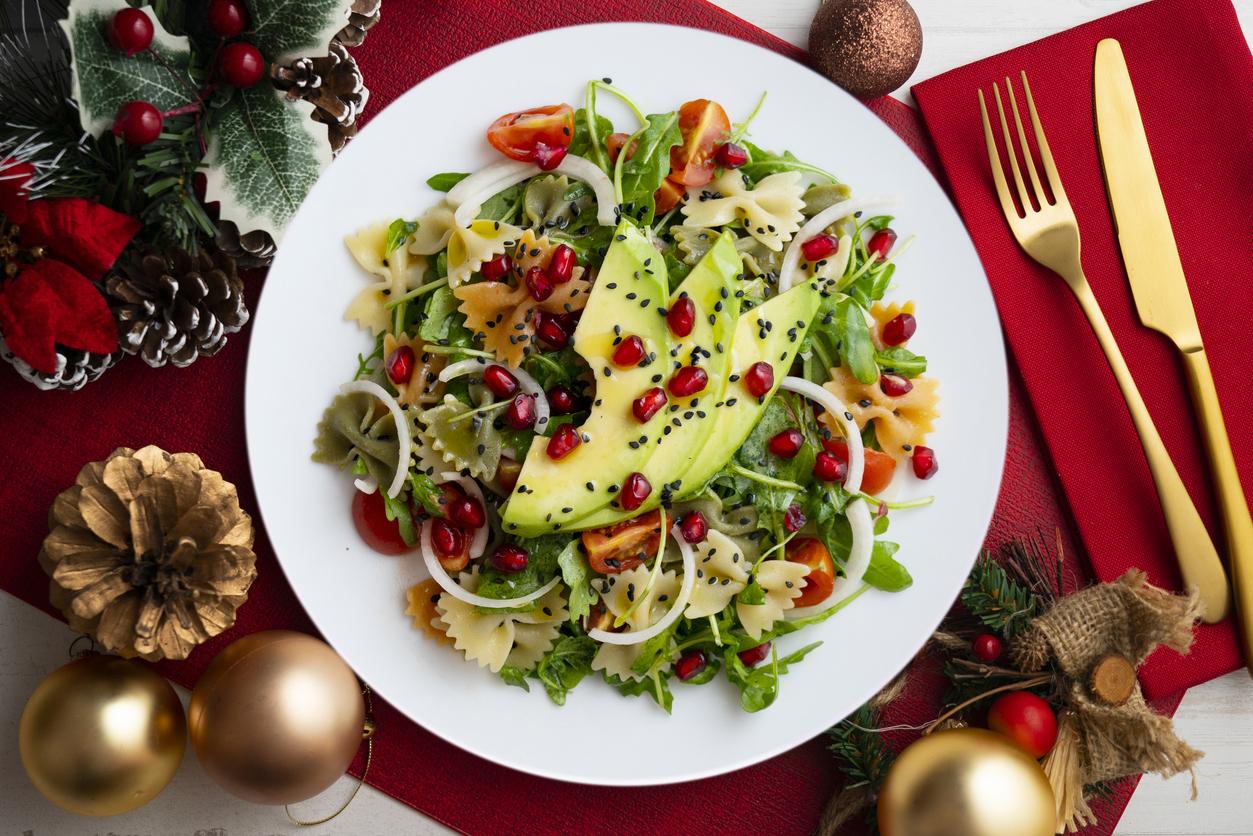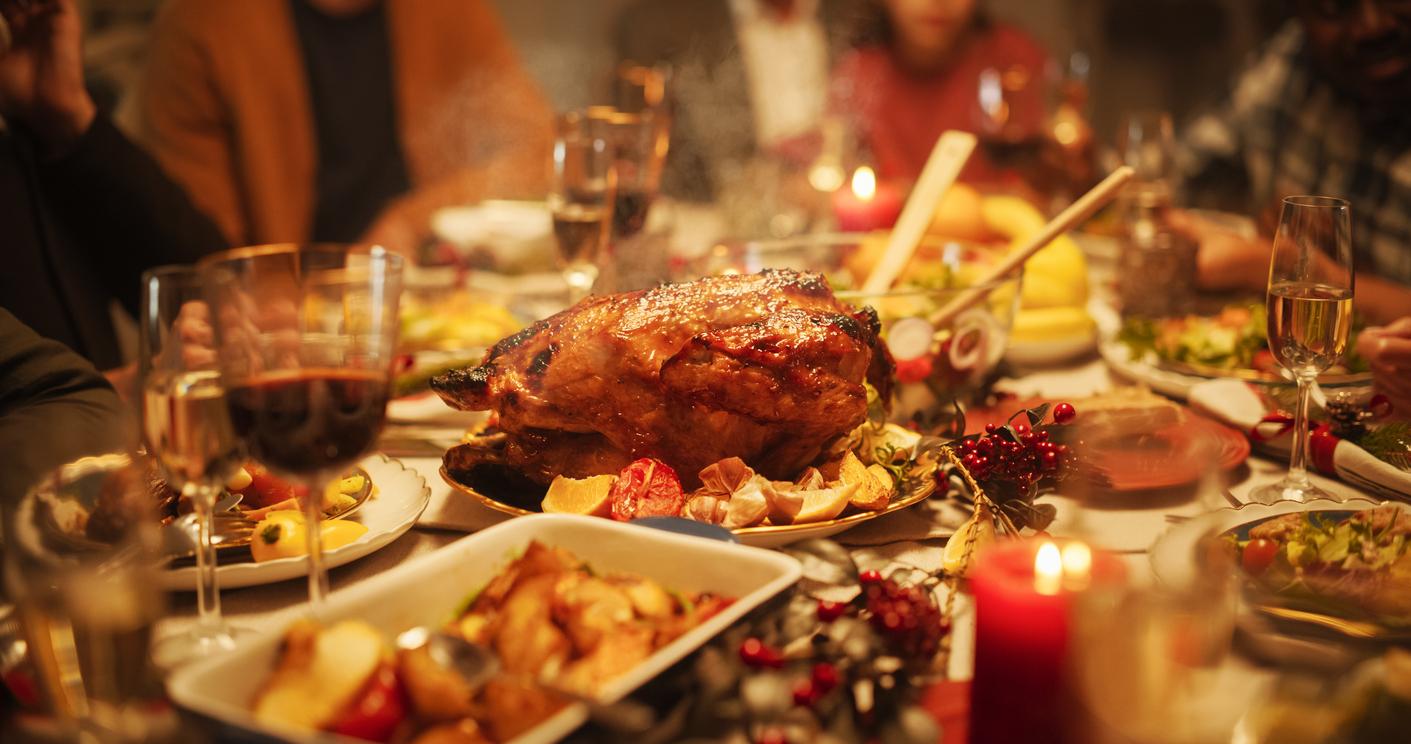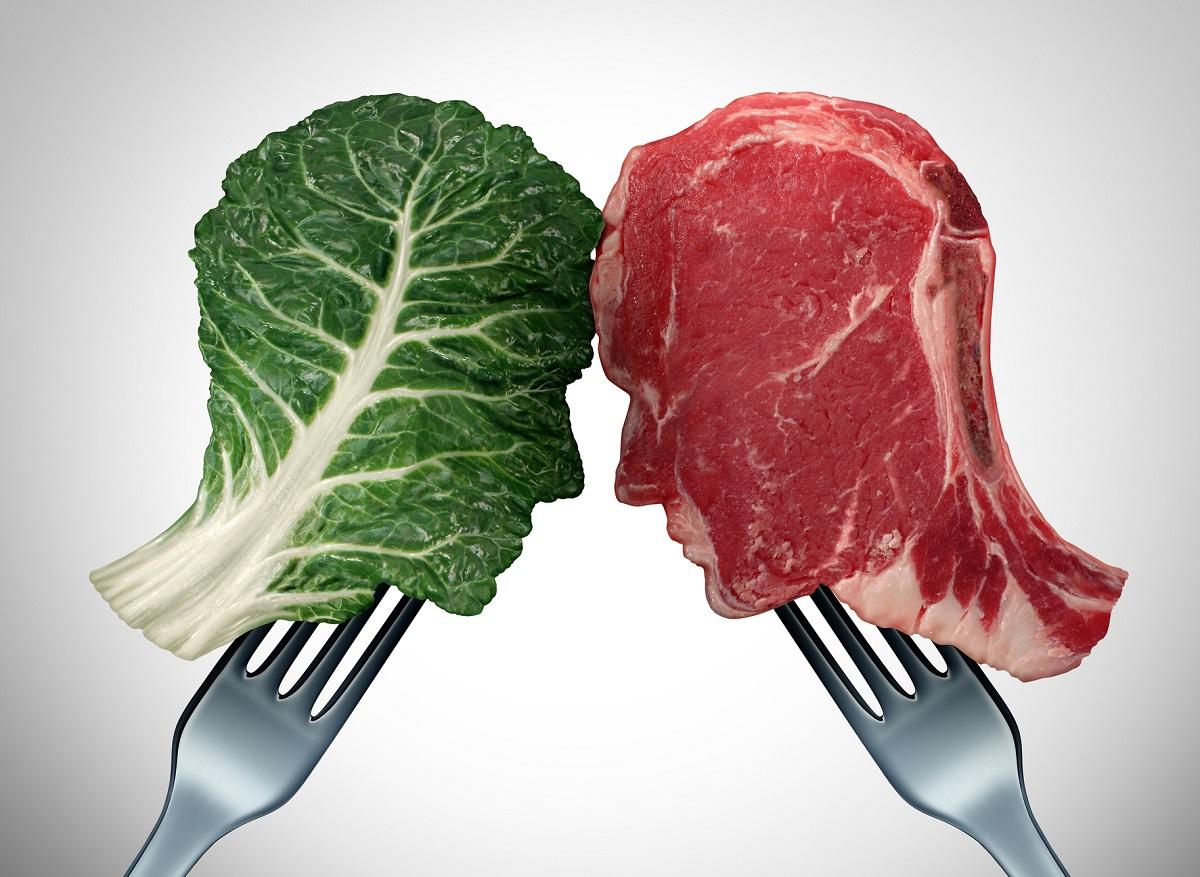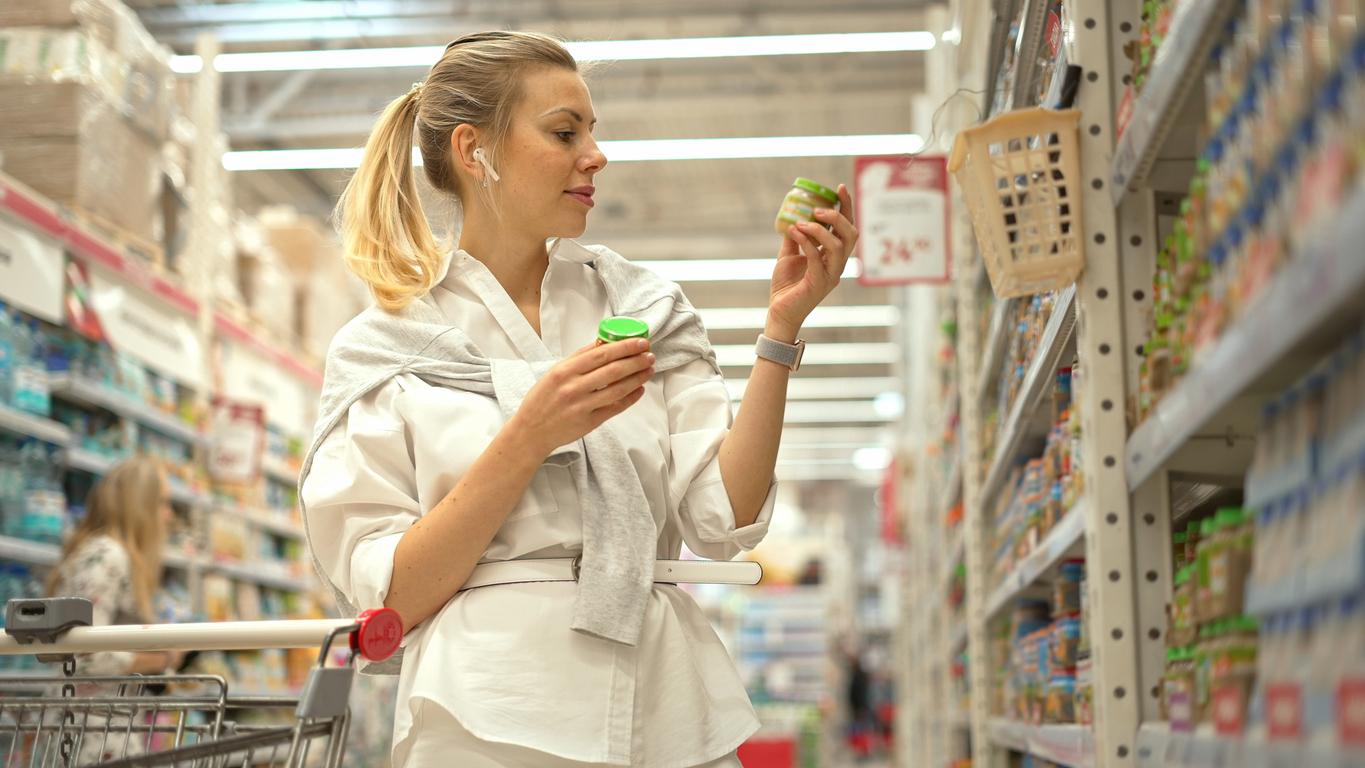Turkey makes you sleepy
We like to eat, and we also talk about food. But not all our ideas about our food are correct.
Turkey makes you sleepy
The Dutch mainly eat turkey at Christmas dinner, Americans cannot do without this large bird at their traditional Thanksgiving feast. It is then served with rich side dishes such as mashed potatoes, pumpkin pie, cranberry compote and gravy. In the US, ‘turkey’ has long been known to be sleep-inducing, because it is said to contain a lot of tryptophan. This building block of proteins ensures the production of serotonin and melatonin, two ‘soothing’ regulators in the body. But turkey doesn’t contain as much tryptophan as claimed. Chicken contains just as much of it, and pork and cheese even more. The drowsiness is therefore not caused by the turkey, but most likely by the rich festive dinner and the overfull stomach.
Black eye? Steak on it!
A black eye is caused by small bleeding from the capillaries around the eye socket. The eye then turns spectacular: from blue-purple, to blue, green and yellow. According to a folk wisdom, it helps to cover a black eye with a raw steak. But this has never been proven. At most, the healing process is accelerated a little bit by the cool steak. The cold reduces the swelling somewhat and makes the blood vessels constrict. But you can also achieve that effect with a simple wet washcloth or even better: with an ice pack.
Red meat gives you cancer
Is not true. It does if you eat a lot of it. A lot of research is being done on the relationship between diet and cancer. In an extensive report by the World Cancer Research Fund in 2007 all data was listed. The Fund concluded that eating a lot of red meat increases the risk of colon cancer. This is probably due to heme, the substance that gives meat its red color. This substance can damage the wall of the colon. The advice is not to eat more than 500 grams (prepared weight) of red meat per week.
The Nutrition Center’s advice comes down to the same: eat red meat no more than five times a week and alternate it with fish, chicken, turkey or a vegetarian replacement.
What is red meat?
When you think of red meat, you quickly think of a somewhat raw steak or other meat that is not fully cooked. By red meat, however, we mean all beef, pork and lamb. It doesn’t matter if it’s well done or half raw. ‘White meat’ is poultry, such as chicken and turkey.
Pork gives you pimples
Pimples (acne) mainly occur during puberty, under the influence of hormones. It has never been scientifically proven that eating pork leads to more pimples. This has never been proven for other well-known scapegoats such as chocolate or mayonnaise. There are studies that point the finger at dairy and a diet full of sugar and other refined products. Research also shows that a healthy diet (lots of fruit, vegetables, oily fish and nuts) improves the condition of the skin. Conclusion: anyone who suffers from pimples would do well to eat as healthy as possible. And pork certainly doesn’t have to be banned.
Pork is fat
There is fatty pork and there is lean pork. Just like there is fat and lean beef. If you choose wisely and you want to eat lean, you can safely put pork on the menu. Think of products such as pork fillet, pork tenderloin, pork fricandeau and ham steaks (see table). Incidentally, pork is rich in protein, iron and B vitamins. Together with grain products, it is even the best source of vitamin B1 in the Dutch diet. A 100 gram piece of pork contains about half the amount of vitamin B1 we need every day.
How many calories? And fat?
| type of meat (per portion) | calories | grams of fat |
| steak (80 g) | 110 | 3 |
| blind finch (75 g) | 140 | 7 |
| meatball, beef (95 g) | 220 | 12 |
| meatball, half and half (95 g) | 260 | 17 |
| breaded schnitzel (150 g) | 310 | 14 |
| pork chop (85 g) | 230 | 15 |
| ham steak (75 g) | 140 | 5 |
| smoked sausage (100 g) | 330 | 30 |
| bacon cubes (75 g) | 320 | 27 |
| tartare (70 g) | 130 | 6 |
| pork bratwurst (90 g) | 280 | 22 |
| pork fricandeau (70 g) | 110 | 2 |
| pork tenderloin (70 g) | 100 | 3 |
| pork steak (70 g) | 190 | 13 |
| pork oyster (70 g) | 100 | 3 |
| Source: nutrition center |
There are no antibiotics in organic meat
Antibiotics are widely used in Dutch factory farming. This is mainly as a precaution, to prevent infections. In the factory industry, animals live very close to each other, which means that the risk of infections is very high. In the past, certain types of antibiotics were also used as growth-promoting agents. As a ‘side effect’, the animals grew extra fast. The use of antibiotics as growth promoters has been banned since 2005. Nevertheless, the Dutch farmer remains a major consumer of antibiotics, especially for chickens and pigs. They use much more than their European counterparts. The major disadvantage of lavish feeding is that bacteria can become resistant to antibiotics. This is how the infamous MRSA bacterium originated.
Due to the heavy use of antibiotics, residues can regularly be found in the meat on your plate. Research by the Consumers’ Association showed, for example, that 8 of the 220 chicken fillets tested contained antibiotics, 7 of which were still below the legally permitted standard. Do not think that antibiotics are not used in organic livestock farming. Organic farmers are not allowed to use antibiotics preventively, but they are allowed to give animals antibiotics if they have an infection. In the aforementioned study by the Consumers’ Association, the standard was really exceeded in an organic chicken fillet.
Chicken is the main cause of food infections
Suffering from stomach flu? The chicken leg or chicken satay from the previous day is often blamed. That is logical in itself, because chicken has had a contaminated image for years. In a 2008 chicken breast study, the Consumers’ Association found that more than a third of chicken breast samples were contaminated with pathogenic bacteria, such as campylobacter and salmonella. At the end of 2008, another study even found a 48 percent infection rate! It is not without reason that the Nutrition Center warns to handle chicken very carefully and to always cook the meat thoroughly. But still, this does not mean that only chicken is to blame. An overview by the RIVM (National Institute for Public Health and the Environment) shows that beef and lamb are by far the most important causes of food infections. Chicken is responsible for about as many food infections as fish and dairy. And fruits and vegetables are also regular culprits. If you want to prevent contamination, it would therefore be a good idea to handle all food with care. And not just with chicken.
This is how you prevent food infections
• Wash your hands regularly, especially if you have touched raw products.
• Always keep raw products separate from prepared products. Also pay attention to kitchen utensils, such as cutting boards and knives.
• Change the dishcloth every day.
• Heat meat, fish and vegetables through and through.
• Adhere to the use-by date on packaging.
Source: www.voedingscentrum.nl
Also read: facts & fables about organic food at www.plusonline.nl/biologisch
Sources):
- Plus Magazine







